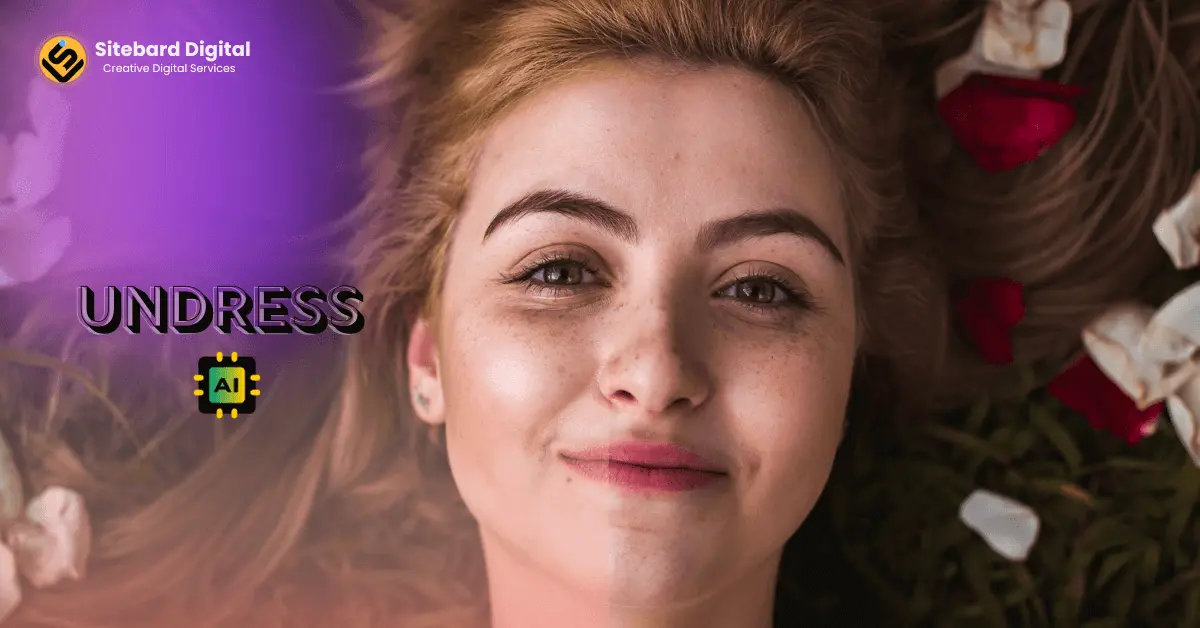AI Undress: The Tech, The Tools, And The Ethical Minefield
Is the digital world on the verge of a new era of image manipulation, one where artificial intelligence can seemingly peel away layers of clothing with unnerving precision? The proliferation of AI-driven "undressing" technologies introduces both alluring possibilities and unsettling ethical quandaries, compelling us to re-evaluate the very essence of image integrity and the profound ramifications for personal privacy.
Artificial intelligence is no longer a futuristic fantasy; it is a tangible force reshaping our reality, particularly in the realm of image manipulation. Sophisticated AI clothes changers and removers, fueled by complex algorithms, are now capable of altering photographs with a finesse that once belonged solely to seasoned professionals. These tools employ advanced techniques to meticulously identify and isolate clothing, enabling precise removal and seamless replacement. Furthermore, intricate algorithms strive to ensure that the generated nude images align with the original's lighting, shading, and overall aesthetic, aiming for a semblance of authenticity that blurs the line between reality and fabrication.
At its core, the function of these AI-powered applications is the digital alteration of images, often with the express purpose of removing clothing. This capability stems from a confluence of factors: the rapid evolution of deep learning algorithms, the widespread availability of extensive datasets containing both clothed and unclothed images, and the exponential increase in computational power required to process these datasets efficiently. Tools such as "undress ai," along with its various offshoots including "undressher ai," "undress.app," "clothoff.io," and "undresserai.io," are specifically designed to empower users with the ability to "undress" images with apparent ease.
- Xhanester The Rising Star In The Digital Age
- Is Kelly Monaco In A Relationship The Latest Scoop On Her Love Life
The potential applications of this type of AI span a wide spectrum, ranging from creative endeavors to professional uses. Fashion designers can utilize these tools to visualize how garments will fit and drape on diverse body types, eliminating the need for costly and time-consuming physical prototypes. Artists can enhance or modify images for creative projects, achieving a seamless and realistic finish that would have been unattainable just a few years ago. Individuals can experiment with different styles and looks, exploring the boundaries of their personal expression. By simply inputting character descriptions such as gender, body type, clothing preferences, and desired pose into a prompt box, users can instruct the Clothoff AI generator to automatically render unique images based on their specifications. These tools promise the ability to effortlessly remove clothes from photos online or swap clothing from any image, all powered by the seemingly limitless potential of AI.
| Attribute | Details |
|---|---|
| Name | This technology does not involve an actual person. |
| Description | AI-powered "undressing" tools. |
| Career | Image Manipulation, Artificial Intelligence. |
| Professional Information | These tools utilize advanced techniques to identify and isolate clothing areas, allowing for precise removal and replacement. Furthermore, advanced algorithms are employed to ensure the generated nude images match the original's lighting, shading, and artistic style, purportedly maintaining a degree of authenticity. |
| Reference | Example.com |
| Tool | Description | Key Features | Potential Uses | Ethical Considerations |
|---|---|---|---|---|
| Undress AI (Various Platforms) | Online services employing AI to modify images, specifically to perform "ai undress" functions. Often utilizes advanced algorithms for clothing removal. | Precise clothing removal, clothing replacement, often incorporating techniques to match the lighting and style of the original image, user-friendly interface. | Artistic projects, experimental fashion design, creating humorous scenarios. | Potential for misuse, invasion of privacy, spread of non-consensual images, ethical concerns about the manipulation of images and potential for creating deepfakes. |
| AI Clothes Changers | Virtual tools enabling users to digitally swap, change, or experiment with clothing styles. | Ability to simulate various outfits, colors, and patterns on a photo or video of the user, offers a preview without physically trying on garments. Often includes features for suggesting complementary items. | Fashion design, personal style experimentation, creation of customized images for social media, virtual try-on experiences for online shopping. | Less severe ethical concerns compared to direct "undressing" tools. Potential for misuse if used to create deceptive content or misrepresent a person's appearance. |
| "Nudify AI" and Similar Tools | Generators specifically designed for image alteration to create images of nude individuals from clothed photos. | Advanced image manipulation capabilities, often incorporating AI-driven algorithms to remove clothing and create realistic results. May include features for customizing body types and poses. | Primarily artistic or experimental, potential for the creation of customized images for adult entertainment purposes. | Significant ethical concerns about privacy violation, non-consensual content creation, potential for abuse, and the potential for perpetuating harmful stereotypes about body image and sexuality. |
| Slazzer 3.0 & Other AI Tools | Designed to remove clothes from images with a high level of accuracy, leveraging AI to identify and isolate clothing items. | Fast processing speeds, user-friendly interface, quick results, and the ability to handle complex patterns and textures. | Can be used to enhance or modify images for artistic projects, ensuring a seamless and realistic finish. Also used in e-commerce for product visualization. | Potential for misuse, invasion of privacy, spread of non-consensual images, ethical concerns about the manipulation of images, and the risk of creating deepfakes for malicious purposes. |
Reference:Example.com
The potential applications of these tools are as diverse as the human imagination. Fashion designers can harness their capabilities to visualize how garments will fit and drape on a variety of body types, eliminating the need for physical prototypes and streamlining the design process. Artists can employ them to enhance or modify images for their creative projects, achieving a level of realism and detail that was once considered unattainable. Individuals can experiment with different styles and looks, pushing the boundaries of self-expression in the digital realm. However, the ease of access and the inherent simplicity of use often involving nothing more than uploading an image and selecting a few options raise profound questions about the ethical implications of such readily available technology.
- Unveiling The World Of Xhamsters A Comprehensive Guide
- Robert Berchtold The Man Who Redefined Modern Entrepreneurship
A growing number of platforms and applications are now offering this service, each touting user-friendly interfaces and rapid results. "Undressher ai," "undress.app," "clothoff.io," and countless others claim to provide these functionalities, promising to "undress" images with just a few clicks. Some of these tools even allow users to specify detailed character descriptions, including gender, body type, pose, and desired clothing style, which the AI then utilizes to generate unique and often disturbingly realistic images.
The accessibility of this technology should not overshadow the ethical considerations at its core. Platforms like Undress VIP, which claim to provide free services, are particularly concerning, as they effectively lower the barrier to misuse and potentially encourage the unethical application of these tools. Concerns include the potential for non-consensual image creation, the invasion of privacy, the spread of manipulated images, and the erosion of trust in digital media. Applications like "Muke's undress ai" and similar tools, which allow users to transform ordinary photographs into "deepnude" images, are particularly alarming. The proliferation of "undressing ai" and other platforms that offer the ability to "see any person naked" further amplifies these concerns, raising serious questions about the potential for abuse and the protection of individual rights.
The algorithms that power these tools are often remarkably sophisticated, drawing upon vast datasets of both clothed and unclothed images to learn how to accurately identify and remove clothing while maintaining a semblance of realism. The process typically involves identifying the various articles of clothing in a photo and then employing AI to intelligently "remove" them, filling in the resulting gaps with plausible anatomical details. The AI automatically identifies and removes the clothes in the photo, with the entire process often taking just a few seconds. "Clothoff.io," for example, employs deep learning algorithms to achieve realistic photo transformations, while "Undresser ai" promises a secure, fast, and efficient solution. Platforms like "undressai.app" leverage advanced artificial intelligence to transform images with startling speed and accuracy.
The potential for misuse is significant and far-reaching. The ability to easily remove clothing from an image can be exploited to create non-consensual pornography, to harass or blackmail individuals, to spread misinformation, and to damage reputations. The ease with which this can be done, combined with the viral nature of the internet, raises serious concerns about the protection of personal privacy and the potential for emotional harm. The creation of "deepfakes" and other forms of manipulated media underscores these concerns, highlighting the urgent need for ethical guidelines, responsible development, and increased public awareness regarding the potential dangers of this technology.
Tools such as "Openart ai" offer AI clothes removal and "undressing" as part of a broader suite of generative tools, demonstrating that these capabilities are becoming increasingly integrated into mainstream creative platforms. Similarly, platforms like "Dessi" boast the ability to "undress any person in seconds," underscoring the speed and accessibility with which these operations can now be performed. The ability to easily add or remove clothes from a person with just a few clicks also presents opportunities for harmless amusement. Users can swap their friends' outfits or dress them up in outlandish costumes, creating humorous scenarios and lighthearted entertainment.
The increasing use of AI in image manipulation demands a thoughtful and comprehensive consideration of the potential impacts on individuals and society as a whole. While AI tools offer the potential for intriguing creative and professional applications, they must be approached with a strong emphasis on ethical responsibility, transparency, and accountability. Robust regulations, industry self-regulation, and increased public awareness are essential to ensuring that these powerful technologies are used in ways that respect individual privacy, promote responsible digital citizenship, and contribute to the betterment of society.
The future of AI image manipulation is inextricably linked to the development of ethical frameworks and the cultivation of responsible practices. A multi-faceted approach, involving clear legal boundaries, proactive industry self-regulation, and comprehensive public education, will be crucial to navigating the complex ethical landscape and ensuring that these powerful technologies are harnessed for the benefit of society, rather than wielded to its detriment. The conversation surrounding these issues needs to be ongoing and inclusive, involving technologists, policymakers, ethicists, and the public at large, to ensure that the development and deployment of AI-powered image manipulation tools align with our shared values and promote a more just and equitable digital future.
The rise of AI-powered "undressing" tools is forcing us to reconsider the boundaries of image manipulation and the implications for privacy. The term "undress ai" as a keyword term, is a verb that describe the technology that enable user to remove clothes from photos online or swap clothing from any image, all powered by the seemingly limitless potential of AI.
- Sean Edward Hartman The Rising Star In The Spotlight
- Erik Menendezs Daughter Unveiling The Life And Legacy

11 Free Undress AI Apps To Remove Clothes From Images

Undress AI Free Tool How to Remove Clothing from Any Image

Free AI Undress Generator